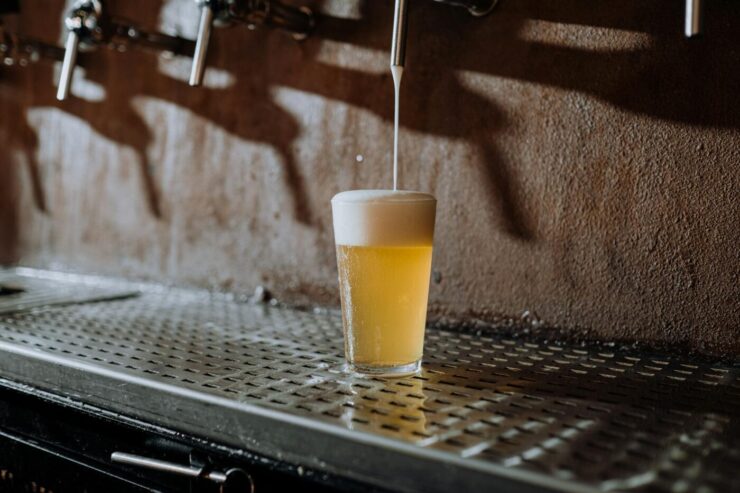Are you considering getting a keg for your next event? That’s a great idea! There are plenty of reasons why choosing a keg is a ripper idea. For starters, it’s often more economical than buying slabs of beer, especially if you’re expecting a decent crowd. Plus, there’s just something about having a keg that screams ‘party’.
- It’s a real crowd-pleaser.
- It reduces waste compared to individual bottles or cans.
- It can be a more sustainable option, depending on your recycling setup.
Kegs are great for reducing the amount of packaging you need to deal with after the event. Less mess, less fuss, more time enjoying the party. Just make sure you’ve got a plan for returning the empty keg to get your deposit back!
Another thing to consider is the variety. Most popular beers are available in kegs, so you’re not limited in your choices. From your classic lagers to your craft brews, there’s a keg out there for every taste. Just remember to check with your local bottle shop or brewery to see what they’ve got on offer. They can usually order in something special if you give them enough notice.
Understanding Keg Sizes and Types
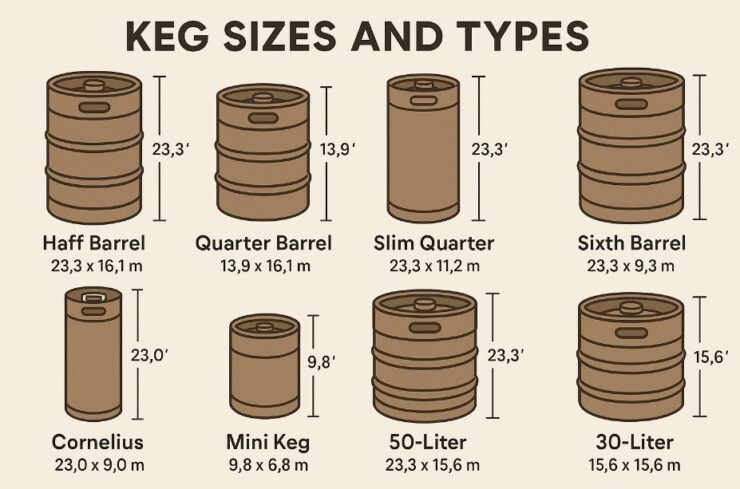
Common Keg Sizes Explained
Alright, so you’re thinking about getting a keg. Good on ya! But before you dive in, it’s worth getting your head around the different sizes available. It’s not just about how much beer you want; it’s also about practicality – how easy it is to move, how quickly you’ll drink it, and what your setup can handle.
- Sixth Barrel (Sixtel): This is probably the most manageable size for smaller gatherings. It holds around 20 litres, which is about 55 stubbies. Easy to lift and store, and a good option if you want variety without committing to a huge amount of one beer.
- Quarter Barrel (Pony Keg): A bit bigger, holding around 30 litres (roughly 82 stubbies). It’s a decent middle ground – more beer than a sixtel, but still not too unwieldy.
- Half Barrel (Full Keg): The big kahuna! This one holds about 50 litres, or around 137 stubbies. This is the most common size you’ll find, and it’s great for larger parties or events where you know the beer will be flowing freely.
- Mini Keg: These little guys are about 5 litres, or 10 and a half pints. Perfect for a small dinner party, and easy to stash in the fridge.
Choosing the right size depends on your event. A small gathering might only need a sixtel, while a massive party could easily smash through a full keg. Think about your guests and their drinking habits!
Types of Beer Available in Kegs
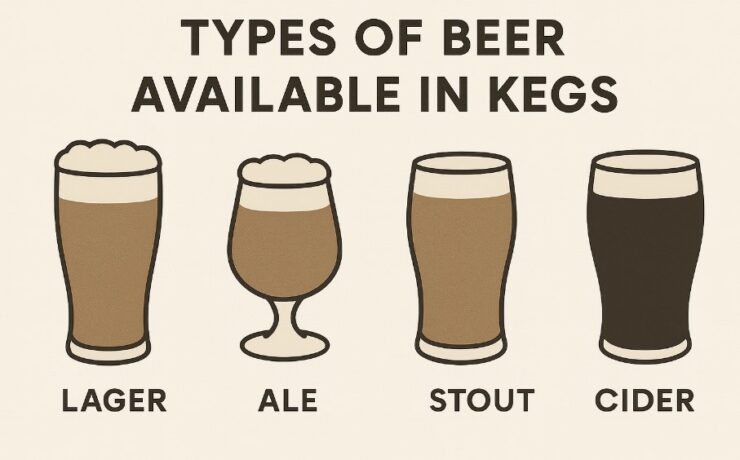
Now, let’s talk about what kind of beer you can actually get in a keg. The good news is, pretty much anything! Most breweries offer their popular brews in kegs, but availability can vary depending on your location and the brewery itself.
- Lagers: Your classic Aussie lagers are almost always available in kegs. Think VB, Carlton Draught, XXXX Gold – the usual suspects.
- Ales: Pale ales, IPAs, brown ales – you name it. Craft breweries especially love putting their ales in kegs.
- Stouts and Porters: If you’re into the dark stuff, you can often find stouts and porters in kegs, especially during the cooler months.
- Ciders: Don’t forget about cider! A refreshing option, especially for those who aren’t huge beer drinkers.
It’s always a good idea to check with your local bottle shop or brewery to see what they have available. Some places might even be able to special order a keg for you if you’re after something specific. Also, consider the type of keg connection required, as some beers might come in kegs that need specific tapping equipment.
Where to Source Keg Beer
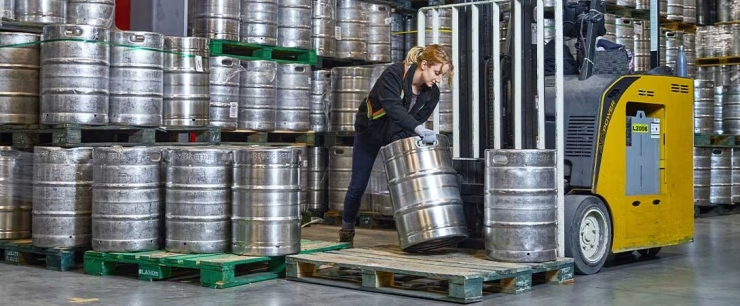
Permanent or Temporary Solutions
Alright, so you’re keen on getting a keg for your event. The next thing you’ll need to figure out is where to actually get your hands on one. You’ve basically got two main options: going for a permanent solution, or opting for something more temporary.
For a temporary setup, think about your local bottle shops or breweries. Most bottle shops can order kegs for you, but it’s always best to call ahead – at least a week or two before your event – to make sure they can get what you want. They’ll usually have a range of popular beers available, and some might even be able to source something a bit more niche if you ask nicely. Breweries are another great option, especially if you’re after something craft. Plus, you’re supporting local, which is always a good thing.
Here’s a quick rundown of temporary options:
- Bottle Shops: Convenient, wide selection, but order in advance.
- Breweries: Fresh, local brews, often with unique options.
- Party Supply Stores: Sometimes stock kegs, along with other event essentials.
Keep in mind that with temporary solutions, you’ll likely need to pay a deposit on the keg itself, and you’ll be responsible for returning it within a certain timeframe. Make sure you understand the terms and conditions before you commit.
Now, if you’re thinking about something more permanent – say, you’re planning on hosting regular events or you just really, really love having beer on tap – then you might want to consider investing in your own kegerator or a more elaborate dispensing system. This means you’ll need to buy your own kegs outright. You can still source these from bottle shops or breweries, but you might also want to look into wholesalers or online suppliers. Just be aware that buying kegs outright can be a bit more expensive upfront, but it can work out cheaper in the long run if you’re a frequent keg consumer.
Things to consider for permanent solutions:
- Initial Investment: Kegerators and dispensing systems can be pricey.
- Storage: You’ll need space to store your keg and equipment.
- Maintenance: Regular cleaning and maintenance are essential to keep your beer tasting its best.
Essential Equipment for Serving Keg Beer
Portable Bar Setups and Dispensing Systems
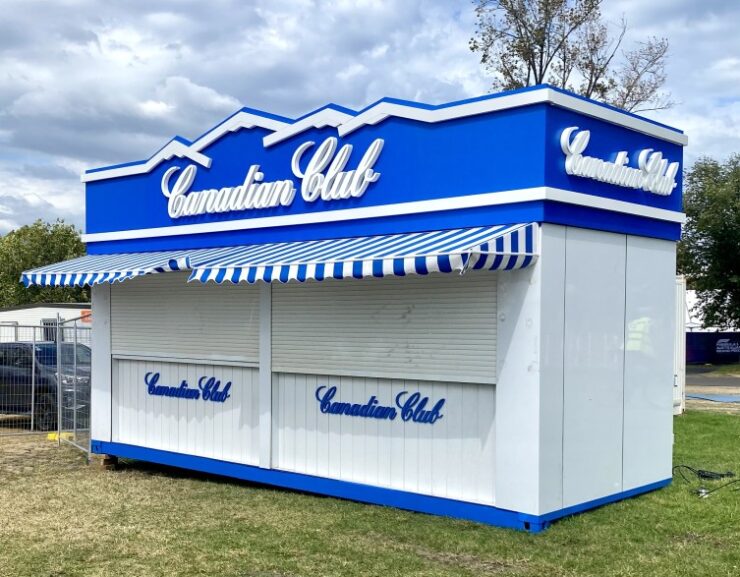
Alright, so you’ve got your keg sorted. Now, how are you actually going to get the beer out? You’ve got a couple of options, depending on how fancy you want to get. The most basic setup involves a simple keg tap, which you can usually rent from the same place you get your keg. These are pretty straightforward – they attach to the keg and let you pump air in to force the beer out. Just remember, with a standard pump tap, you’ll want to finish the keg within 24 hours, otherwise it’ll go flat.
For a slightly more professional setup, consider a portable bar. These often come with a built-in tap and a way to keep the keg cool. They’re great if you want something that looks a bit nicer than just a keg sitting on the floor. Portable bars can really elevate the look of your event.
If you’re serious about your beer, you might want to invest in a CO2 dispensing system. This uses CO2 to push the beer out, which keeps it fresher for longer. You’ll need:
- A CO2 tank
- A regulator to control the pressure
- The right connectors to hook everything up
Using CO2 is the way to go if you want your keg to last more than a day. It prevents the beer from going stale and keeps the carbonation just right. Plus, you won’t have to pump every few minutes!
Cooling Solutions for Kegs
Warm beer? No thanks! Keeping your keg cold is absolutely vital. The easiest way is to grab a big tub or bucket, chuck the keg in, and surround it with ice. Make sure you get ice all the way around, even on top, to keep the temperature even. You’ll probably need to top up the ice regularly, especially if it’s a warm day.
Another option is a keg insulator, which is basically like a big stubby holder for your keg. These are usually made of neoprene and can help keep the keg cold for longer. For something even better, look into a keg cooler. These are insulated containers that fully enclose the keg and keep the ice from melting as quickly.
No matter what you choose, remember to chill your keg for at least 4-5 hours before tapping it. This will help prevent foamy beer and ensure everyone gets a nice, cold pint.
Tips for a Successful Keg Beer Event
Setting up a portable bar can really elevate your event. Think about where you’ll position it – somewhere accessible but not in the way. A simple trestle table can work, but a proper bar setup looks more professional.
- Consider a jockey box for cooling if you don’t have a refrigerated setup.
- Make sure you have enough glassware – pint glasses, schooners, or even plastic cups if it’s a casual affair.
- Have a designated area for empty glasses and rubbish to keep things tidy.
Remember to have all your equipment ready to go before the event starts. There’s nothing worse than scrambling for a tap or CO2 canister when your guests are thirsty.
Cooling Solutions for Kegs
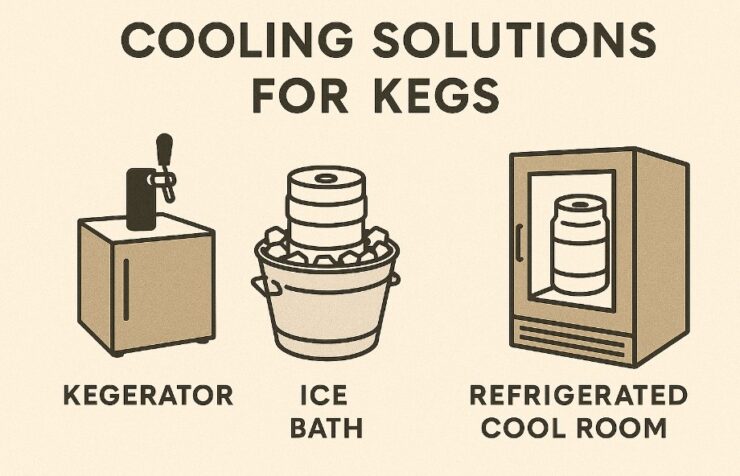
Keeping your keg cold is absolutely vital, especially in the Aussie heat. Warm beer is a party killer! The ideal temperature for most beers is between 3-8 degrees Celsius.
- A kegerator is the best option, but they can be pricey.
- A tub filled with ice and water works well, just make sure to top it up regularly.
- Consider using frozen water bottles instead of ice – they melt slower and won’t water down the water.
Here’s a rough guide to cooling times:
| Cooling Method | Time to Cool (Approx.) | |
| Kegerator | 2-3 hours | |
| Ice Bath | 4-6 hours | |
| Refrigerated Cool Room | 6-8 hours |
Wrapping It Up
So, there you have it. Getting a keg for your next shindig doesn’t have to be a big drama. With a bit of forward planning, knowing what you need, and sorting out the right gear, you’ll be pouring cold ones like a pro. Just remember to chill that keg properly and get it back on time. Cheers to a great event!
Frequently Asked Questions
How do you work out how much beer you’ll need for your event?
To figure out how much beer you’ll need, think about your event. A good rule of thumb is to expect each guest to drink one or two beers per hour. Kegs come in different sizes, so you can pick one that fits your party best. For example, a mini keg holds about 5 litres, which is good for smaller gatherings, while a full-sized keg has enough for around 165 servings.
Do you need to rent a tap for the keg?
Yes, you’ll definitely need to rent a tap to get the beer out of the keg. Most places that sell kegs will also rent you a tap. You’ll usually pay a refundable deposit for the tap, plus a small fee that isn’t refundable for cleaning it.
How long should you chill your keg before tapping it?
It’s super important to get your keg nice and cold before you start serving. You should chill your keg for at least 4 to 5 hours. To do this, put the keg in a large bucket or tub, add a layer of ice at the bottom, then place the keg in. Fill the rest of the space around the keg with ice and cover the top. This makes sure the beer is perfectly cold and not too foamy.
How long does a tapped keg stay fresh?
Once you’ve tapped a keg using a party pump (which uses air), the beer usually stays good for about 12 to 24 hours. The exact time depends on the type of beer and how much air was pumped in. If you don’t think you’ll drink the whole keg within a day, you might want to look into a system that uses CO2 gas, as this keeps the beer fresh for longer.
How do you clean a keg pump?
It’s a good idea to clean your keg pump after every use. At the very least, rinse the inside with water to get rid of any beer left behind, which helps stop germs from growing. For a proper clean, you can buy a beer line cleaning kit that comes with a special tool to flush and sanitise the pump.
Should you move the keg around once it’s delivered?
When you pick up your keg, don’t move it around too much once you get it to your event spot. It’s best to put the keg exactly where you want it to be served and then leave it there for at least an hour before you tap it. This gives the beer time to settle down, so it pours nicely and tastes its best.

